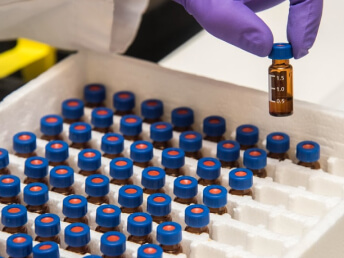Services
Our Services
if you are looking a best hematologist in Dhaka Bangladsh, you are in now right place.

Thalassaemia

Anaemia

Blood Diseases

Jaundice

Myeloma

Lymphoma

Haemophilia

Bleeding Disorder

Bone Marrow Transplant
Thalassemia is a genetic blood disorder characterized by abnormal hemoglobin production, leading to inadequate production of red blood cells and anemia. Hemoglobin is the protein in red blood cells that carries oxygen throughout the body.
There are two main types of thalassemia: alpha thalassemia and beta thalassemia. Each type has different subtypes and severity levels.
Alpha thalassemia: This type occurs when there is a defect or mutation in one or more of the four genes responsible for producing alpha globin chains. There are various forms of alpha thalassemia, including silent carrier, alpha thalassemia trait, hemoglobin H disease, and the most severe form, alpha thalassemia major or hydrops fetalis.
Beta thalassemia: This type results from mutations in the beta globin genes. Similar to alpha thalassemia, beta thalassemia can range from asymptomatic carriers to severe forms such as beta thalassemia major, also known as Cooley’s anemia.
The severity of thalassemia depends on how many of the alpha or beta globin genes are affected and to what extent they are affected.
Symptoms of thalassemia can vary widely and may include fatigue, weakness, pale skin, jaundice, delayed growth and development (especially in children), bone deformities, and an enlarged spleen.
Treatment options for thalassemia depend on the severity of the condition. Mild cases may not require treatment beyond regular monitoring, while severe cases may require blood transfusions, iron chelation therapy to manage iron overload from transfusions, and in some cases, bone marrow transplants. Genetic counseling is also an important aspect of managing thalassemia, especially for individuals and families considering having children.
Anemia is a medical condition characterized by a deficiency in the number of red blood cells or a decrease in the amount of hemoglobin, the protein that carries oxygen to the body’s tissues. As a result, people with anemia may experience symptoms such as fatigue, weakness, shortness of breath, pale skin, dizziness, headache, and rapid or irregular heartbeat.
There are many causes of anemia, including:
Iron deficiency: This is the most common cause of anemia worldwide and occurs when the body doesn’t have enough iron to produce hemoglobin.
Vitamin deficiency: Anemia can result from deficiencies in vitamin B12 or folate, both of which are necessary for red blood cell production.
Chronic diseases: Conditions such as chronic kidney disease, cancer, rheumatoid arthritis, and inflammatory bowel disease can interfere with red blood cell production or lead to the destruction of red blood cells.
Bone marrow disorders: Disorders such as aplastic anemia, myelodysplastic syndromes, and leukemia can impair the production of red blood cells.
Hemolytic anemia: This occurs when red blood cells are destroyed faster than they can be produced, leading to a shortage of red blood cells. Hemolytic anemia can be inherited or acquired and may result from autoimmune disorders, infections, medications, or other causes.
Treatment for anemia depends on the underlying cause. In cases of iron deficiency anemia, treatment may involve iron supplementation and dietary changes. Vitamin deficiencies can be corrected with supplements or dietary changes as well. In some cases, treating the underlying medical condition or disorder responsible for the anemia may help alleviate symptoms.
It’s essential for individuals experiencing symptoms of anemia to consult a healthcare professional for proper diagnosis and treatment. Anemia can be a sign of an underlying health issue that may require medical attention.
Blood diseases encompass a wide range of disorders that affect the components of blood, including red blood cells, white blood cells, platelets, and plasma. Some common blood diseases include:
Anemia: Anemia occurs when the body lacks enough healthy red blood cells or hemoglobin to carry an adequate amount of oxygen to tissues. Iron deficiency anemia, vitamin deficiency anemias (such as B12 deficiency), and hemolytic anemias are some examples.
Hemophilia: Hemophilia is an inherited bleeding disorder characterized by the absence or deficiency of certain clotting factors, which can lead to prolonged bleeding episodes even from minor injuries.
Thrombocytopenia: This condition involves a low platelet count in the blood, which can lead to increased risk of bleeding and bruising.
Leukemia: Leukemia is a type of cancer that affects the blood-forming tissues, including the bone marrow and lymphatic system. It results in the overproduction of abnormal white blood cells, crowding out healthy blood cells and impairing normal blood function.
Lymphoma: Lymphoma is another type of cancer that affects the lymphatic system, including the lymph nodes, spleen, and bone marrow. It involves the abnormal growth of lymphocytes, a type of white blood cell.
Sickle cell disease: Sickle cell disease is a genetic disorder characterized by abnormal hemoglobin molecules in red blood cells, leading to a characteristic sickle shape of the cells. This can cause blockages in blood vessels, leading to pain, organ damage, and other complications.
Polycythemia: Polycythemia is a condition characterized by an abnormally high red blood cell count, which can increase the risk of blood clots and other cardiovascular complications.
Thalassemia: Thalassemia is a genetic disorder characterized by abnormal hemoglobin production, leading to inadequate red blood cell production and anemia.
Treatment for blood diseases varies depending on the specific disorder and its severity. It may include medications, blood transfusions, bone marrow transplants, chemotherapy, radiation therapy, or other interventions aimed at managing symptoms, controlling the disease, and improving quality of life. Early diagnosis and appropriate medical care are crucial for effectively managing blood diseases and minimizing complications.
Jaundice is a medical condition characterized by the yellowing of the skin, mucous membranes, and whites of the eyes. It occurs when there is an excess of bilirubin in the bloodstream, which is a yellow pigment produced during the normal breakdown of red blood cells. Bilirubin is typically processed by the liver and excreted in bile, but when the liver is unable to metabolize bilirubin efficiently or when there is an obstruction in the bile ducts, bilirubin levels can rise, leading to jaundice.
Some common causes of jaundice include:
Hepatitis: Inflammation of the liver due to viral infection (hepatitis A, B, C, etc.) can impair liver function and lead to jaundice.
Liver cirrhosis: Chronic liver damage and scarring can impair liver function, leading to jaundice.
Biliary tract disorders: Conditions such as gallstones, bile duct obstruction, or tumors in the bile ducts can obstruct the flow of bile and lead to jaundice.
Hemolytic anemia: Increased breakdown of red blood cells can overwhelm the liver’s ability to process bilirubin, leading to jaundice.
Newborn jaundice: Many newborn babies experience mild jaundice shortly after birth due to the immaturity of their liver and the rapid breakdown of fetal red blood cells.
The main symptom of jaundice is the yellowing of the skin, but other symptoms may include yellowing of the whites of the eyes, dark urine, pale stools, itching, fatigue, and abdominal pain.
Treatment for jaundice depends on the underlying cause. In some cases, addressing the underlying condition may resolve jaundice. Treatment may include medications to treat liver or bile duct disorders, lifestyle changes such as dietary modifications, and in severe cases, procedures to remove bile duct obstructions or liver transplantation.
It’s essential for individuals experiencing jaundice or symptoms of liver dysfunction to seek medical evaluation and appropriate treatment to identify the underlying cause and prevent complications.
Myeloma, also known as multiple myeloma, is a type of cancer that affects plasma cells, a type of white blood cell that produces antibodies to help the body fight infections. In multiple myeloma, abnormal plasma cells (myeloma cells) accumulate in the bone marrow, crowding out healthy blood cells and interfering with normal blood cell production.
Some key points about multiple myeloma include:
Symptoms: Multiple myeloma can cause a variety of symptoms, including bone pain (especially in the back or ribs), weakness, fatigue, recurrent infections, unexplained weight loss, easy bruising or bleeding, and frequent urination, especially at night.
Diagnosis: Diagnosis typically involves a combination of blood tests, urine tests, imaging studies (such as X-rays, MRI, or CT scans), and bone marrow biopsy to examine the presence of abnormal plasma cells.
Treatment: Treatment for multiple myeloma depends on several factors, including the stage and aggressiveness of the disease, the patient’s overall health, and individual preferences. Treatment options may include chemotherapy, targeted therapy, immunotherapy, corticosteroids, radiation therapy, stem cell transplant, and supportive therapies to manage symptoms and complications.
Prognosis: The prognosis for multiple myeloma varies widely depending on factors such as the stage of the disease at diagnosis, the patient’s age and overall health, and the response to treatment. While multiple myeloma is generally considered incurable, advances in treatment have significantly improved outcomes and prolonged survival for many patients.
Complications: Multiple myeloma can lead to various complications, including bone fractures and bone pain due to weakened bones (osteoporosis), kidney damage, anemia, hypercalcemia (elevated calcium levels in the blood), and increased susceptibility to infections.
Patients with multiple myeloma often receive care from a multidisciplinary team of healthcare professionals, including hematologists, oncologists, nurses, and supportive care specialists, to address the complex medical and supportive care needs associated with the disease. Early diagnosis and prompt initiation of treatment can help improve outcomes and quality of life for individuals with multiple myeloma.
Lymphoma is a type of cancer that originates in the lymphatic system, which is part of the body’s immune system. The lymphatic system includes lymph nodes, lymphatic vessels, spleen, thymus gland, and bone marrow. Lymphoma occurs when lymphocytes, a type of white blood cell, become abnormal and grow out of control.
There are two main types of lymphoma:
Hodgkin lymphoma (HL): Hodgkin lymphoma is characterized by the presence of Reed-Sternberg cells, which are large abnormal cells found in the lymph nodes. HL usually begins in a single lymph node or a group of lymph nodes and can spread to other parts of the body over time.
Non-Hodgkin lymphoma (NHL): Non-Hodgkin lymphoma comprises a large group of lymphomas that do not involve Reed-Sternberg cells. NHL can arise from various types of lymphocytes and can occur in lymph nodes as well as other lymphoid tissues and organs.
Lymphoma can present with a variety of symptoms, including swollen lymph nodes (which may or may not be painful), fever, night sweats, unexplained weight loss, fatigue, itching, and difficulty breathing or swallowing, depending on the location and extent of the disease.
The exact cause of lymphoma is not well understood, but factors such as genetics, immune system disorders, infections (such as Epstein-Barr virus or Helicobacter pylori), exposure to certain chemicals, and autoimmune diseases may contribute to its development.
Treatment for lymphoma depends on several factors, including the type and stage of the disease, the patient’s age and overall health, and individual preferences. Treatment options may include chemotherapy, radiation therapy, immunotherapy (such as monoclonal antibodies), targeted therapy, stem cell transplant, or a combination of these approaches.
The prognosis for lymphoma varies widely depending on the type and stage of the disease, as well as the patient’s response to treatment. Advances in diagnosis and treatment have significantly improved outcomes for many patients with lymphoma, and ongoing research continues to explore new treatment options and strategies to improve survival and quality of life.
Hemophilia is a genetic bleeding disorder that impairs the body’s ability to form blood clots properly. It is characterized by a deficiency or absence of specific proteins called clotting factors, which are necessary for blood to clot effectively and stop bleeding. Hemophilia is typically inherited, although spontaneous mutations can also occur.
There are several types of hemophilia, the most common being:
Hemophilia A: This type results from a deficiency of clotting factor VIII.
Hemophilia B: Also known as Christmas disease, this type results from a deficiency of clotting factor IX.
Hemophilia C: This type is much rarer and results from a deficiency of clotting factor XI.
Symptoms of hemophilia can vary depending on the severity of the clotting factor deficiency. Some common signs and symptoms include:
- Prolonged bleeding from minor cuts or injuries
- Easy bruising
- Excessive bleeding from the mouth or nose
- Bleeding into joints, which can cause swelling, pain, and limited mobility
- Excessive bleeding following surgery or dental procedures
- Blood in the urine or stool
Treatment for hemophilia typically involves replacing the deficient clotting factor through intravenous infusion of clotting factor concentrates. These infusions help to temporarily correct the clotting defect and prevent or stop bleeding episodes. In cases of severe hemophilia, prophylactic (preventive) infusions may be necessary to prevent spontaneous bleeding episodes.
In addition to clotting factor replacement therapy, other treatments for hemophilia may include the use of medications to stimulate the production of clotting factors, desmopressin (DDAVP) to temporarily raise levels of factor VIII in some cases of hemophilia A, and physical therapy to manage joint problems resulting from repeated bleeding into the joints.
With appropriate treatment and management, individuals with hemophilia can lead relatively normal lives. However, they require careful monitoring and prompt treatment of bleeding episodes to prevent complications such as joint damage, organ damage, and potentially life-threatening bleeding. Genetic counseling is also important for families affected by hemophilia to understand the inheritance pattern and make informed decisions about family planning.
A bleeding disorder is a medical condition characterized by an abnormal tendency to bleed or clot due to deficiencies or abnormalities in the body’s blood clotting process. These disorders can result from various genetic, acquired, or medication-related factors and can affect the clotting proteins, platelets, or blood vessel walls involved in hemostasis (the process of blood clot formation).
Some common types of bleeding disorders include:
Hemophilia: Hemophilia is a genetic bleeding disorder characterized by deficiencies in specific clotting factors, such as factor VIII (hemophilia A) or factor IX (hemophilia B). These deficiencies impair the blood’s ability to clot effectively, leading to prolonged bleeding episodes, especially after injuries or surgeries.
Von Willebrand disease (VWD): Von Willebrand disease is the most common inherited bleeding disorder. It results from a deficiency or dysfunction of von Willebrand factor, a protein that helps platelets adhere to the blood vessel walls and form clots. Individuals with VWD may experience easy bruising, mucosal bleeding (nosebleeds, gum bleeding), and heavy menstrual bleeding.
Platelet disorders: Platelets are blood cells involved in the initial stages of blood clotting. Disorders affecting platelets can result in thrombocytopenia (low platelet count), impaired platelet function, or abnormal platelet production. Examples include immune thrombocytopenic purpura (ITP), thrombotic thrombocytopenic purpura (TTP), and Bernard-Soulier syndrome.
Coagulation factor deficiencies: Deficiencies in various coagulation factors other than factor VIII or IX can lead to bleeding disorders. For example, deficiencies in factors II, V, VII, X, XI, or XIII can result in impaired blood clot formation and increased bleeding tendencies.
Acquired bleeding disorders: Certain medical conditions, medications, or lifestyle factors can increase the risk of bleeding disorders. Examples include liver disease, vitamin K deficiency, anticoagulant medications, and excessive alcohol consumption.
Treatment for bleeding disorders depends on the underlying cause and severity of the condition. It may include clotting factor replacement therapy, medications to stimulate platelet production or function, desmopressin (DDAVP) therapy, antifibrinolytic medications, and supportive care measures to manage bleeding episodes and prevent complications.
Individuals with bleeding disorders should receive comprehensive care from a multidisciplinary healthcare team, including hematologists, specialized nurses, physical therapists, and genetic counselors, to optimize management and improve quality of life.
A bone marrow transplant (BMT), also known as a hematopoietic stem cell transplant (HSCT), is a medical procedure used to replace damaged or diseased bone marrow with healthy stem cells. Bone marrow is the soft, spongy tissue found inside bones that produces blood cells, including red blood cells, white blood cells, and platelets.
Bone marrow transplants are commonly used to treat various conditions, including:
Cancers: Bone marrow transplants are often used to treat cancers that affect the bone marrow or blood cells, such as leukemia, lymphoma, and multiple myeloma. High-dose chemotherapy or radiation therapy is often used to destroy cancerous cells in the bone marrow before the transplant.
Bone Marrow Disorders: Bone marrow disorders, such as aplastic anemia, myelodysplastic syndromes (MDS), and certain inherited immune system disorders, may require a bone marrow transplant to restore normal blood cell production.
Genetic Disorders: Some genetic disorders, such as sickle cell anemia, thalassemia, and severe combined immunodeficiency (SCID), can be treated with a bone marrow transplant to replace diseased cells with healthy ones.
There are two main types of bone marrow transplants:
Autologous Transplant: In an autologous transplant, the patient’s own stem cells are collected before undergoing high-dose chemotherapy or radiation therapy. After treatment, the collected stem cells are infused back into the patient to help regenerate healthy bone marrow and blood cells.
Allogeneic Transplant: In an allogeneic transplant, stem cells are obtained from a compatible donor, such as a sibling, unrelated donor, or cord blood donor. The donor’s stem cells are infused into the recipient’s bloodstream, where they travel to the bone marrow and begin producing healthy blood cells.
During the transplant process, patients may experience side effects and complications, including infections, bleeding, graft-versus-host disease (in allogeneic transplants), and organ damage. Close monitoring and supportive care are essential to manage these complications and improve outcomes.
Bone marrow transplantation is a complex and intensive procedure that requires careful evaluation, preparation, and follow-up care. It is often performed at specialized medical centers by a multidisciplinary team of healthcare professionals, including hematologists, oncologists, transplant specialists, nurses, and supportive care providers.
Address
Popular Diagnostic Center
Shantinagar
Banani Specialized Hospital, Banani
New PC Lab ltd, Mirpur-1
Call Us
01731-278789
Email Us
abdulhai31@yahoo.com